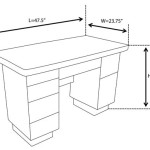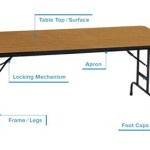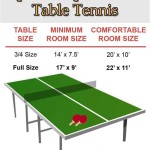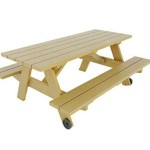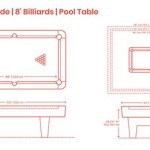How to Make a Tabletop
Creating a tabletop is a rewarding project that can add a personalized touch to your home. Whether you're building a new table or restoring an old one, the process requires careful planning and execution. This guide will provide a comprehensive overview of how to make a tabletop, covering the essential steps from selecting materials to finishing the surface.
1. Choosing the Right Materials
The type of tabletop you build will dictate the materials needed. Consider the intended use, style, and budget when making your selection. Here are some popular options:
- Wood: Solid wood is a classic choice for tabletops. It offers durability and a natural aesthetic. Popular species include oak, maple, walnut, and cherry. However, solid wood can be more expensive and prone to warping or cracking.
- Plywood: Plywood is a cost-effective alternative to solid wood. It consists of layers of wood veneer glued together, making it less prone to warping. Plywood is also available in various thicknesses and finishes.
- Medium-density fiberboard (MDF): MDF is a dense wood-based panel that is smooth and easy to work with. It is often used for tabletops that require a flat, even surface. However, MDF is not as durable as wood or plywood. It is essential to seal the surface properly to prevent moisture damage.
- Glass: Glass tabletops offer a sleek and modern look. They are easy to clean and resistant to stains. However, glass is fragile and susceptible to scratches.
- Stone: Natural stone, such as granite or marble, brings a luxurious and elegant touch to tabletops. It is durable and heat-resistant. However, stone can be expensive and heavy.
2. Preparing the Surface
Once you have chosen the material, it's crucial to prepare the surface properly. This step ensures a smooth and even finish for your tabletop.
- Sanding: For wood, plywood, or MDF, start by sanding the surface with progressively finer grits of sandpaper. This removes imperfections and creates a uniform surface for finishing. You can use an orbital sander for larger areas and a hand sander for smaller details.
- Cleaning: After sanding, wipe the surface thoroughly with a clean cloth to remove any dust or debris. This prevents dust particles from becoming trapped in the finish.
- Filling gaps: If there are any gaps or cracks in the surface, use wood filler or epoxy to fill them. Allow the filler to dry completely before sanding it smooth.
3. Applying the Finish
The final step is to apply a protective finish to your tabletop. This not only enhances its appearance but also protects it from scratches, stains, and moisture.
- Paint: Painting your tabletop provides a customizable and durable finish. Use an oil-based paint for maximum durability. Ensure the paint is thoroughly dried before applying any additional coats.
- Staining: Staining wood tabletops enhances the natural grain and adds warmth to the surface. Apply the stain evenly with a brush or cloth and allow it to dry completely.
- Varnish: Varnish creates a clear, protective layer over the wood. It comes in various gloss levels, ranging from matte to high gloss. Apply varnish in thin coats, allowing each coat to dry thoroughly before applying the next.
- Polyurethane: Polyurethane is a durable and water-resistant coating. It is often used for tabletops that will receive heavy wear and tear. Apply it in thin coats, allowing each coat to dry completely before applying the next.
Remember to follow the manufacturer's instructions carefully when using any finishing products.

How To Build A Simple Diy Wooden Table Top The Way

How To Build A Simple Diy Wooden Table Top The Way

10 Tips For Building Tabletops Ana White

How To Make A Table Top Without Jointer

How To Make A Perfectly Round Table Top Using Router

Hardwood Table Top From Scrap Wood And Construction Lumber

How To Build A Table Top Using Wood Quora

How To Build A Simple Diy Wooden Table Top The Way Dining Room Wood

How To Make A Table Top Without Jointer

How To Make A Tabletop With 2x4s Bob Vila



